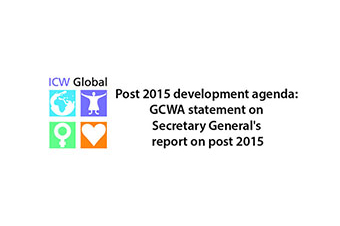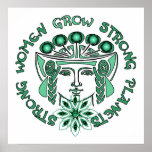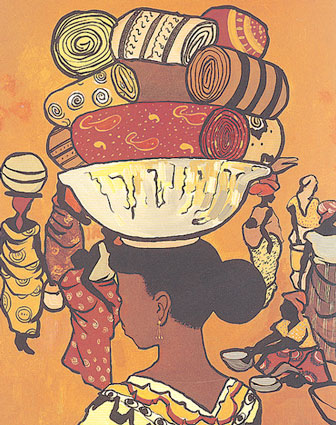Feminist theory exists in a variety of disciplines, emerging from these feminist movements and including general theories[specify] and theories about the origins of inequality, and, in some cases, about the social construction of sex and gender. Feminist activists have campaigned for women's rights—such as in contract, property, and voting — while also promoting women's rights to bodily integrity and autonomy and reproductive rights. They have opposed domestic violence, sexual harassment, and sexual assault. In economics, they have advocated for workplace rights, including equal pay and opportunities for careers and to start businesses.
Depending on time, culture and country, feminists around the world have sometimes had different causes and goals. Most western feminist historians assert that all movements that work to obtain women's rights should be considered feminist movements, even when they did not (or do not) apply the term to themselves. Other historians assert that the term should be limited to the modern feminist movement and its descendants. Those historians use the label "protofeminist" to describe earlier movements.
The history of the modern western feminist movements is divided into three "waves". Each is described as dealing with different aspects of the same feminist issues. The first wave refers mainly to women's suffrage movements of the nineteenth and early twentieth centuries (mainly concerned with women's right to vote). The second wave refers to the ideas and actions associated with the women's liberation movement beginning in the 1960s (which campaigned for legal and social equality for women). The third wave refers to a continuation of, and a reaction to, the perceived failures of second-wave feminism, beginning in the 1990s.
First-wave feminism was a period of activity during the nineteenth century and early twentieth century. In the U.K. and U.S., it focused on the promotion of equal contract, marriage, parenting, and property rights for women. However, by the end of the nineteenth century, activism focused primarily on gaining political power, particularly the right of women's suffrage, though some feminists were active in campaigning for women's sexual, reproductive, and economic rights at this time.
Women's suffrage was achieved in Britain's Australasian colonies at the close of the 19th century with the self-governing colonies of New Zealand and South Australia granting women the right to vote in 1893 and 1895 respectively, and followed by Australia permitting women to stand for parliamentary office and granting women's' right to vote.
In Britain the Suffragettes and the Suffragists campaigned for the women's vote, and in 1918 the Representation of the People Act was passed granting the vote to women over the age of 30 who owned houses. In 1928 this was extended to all women over twenty-one. In the U.S., notable leaders of this movement included Lucretia Mott, Elizabeth Cady Stanton, and Susan B. Anthony, who each campaigned for the abolition of slavery prior to championing women's right to vote and were strongly influenced by Quaker thought. In the United States, first-wave feminism is considered to have ended with the passage of the Nineteenth Amendment to the United States Constitution (1919), granting women the right to vote in all states. The term first wave, was coined retrospectively to categorize these western movements after the term second-wave feminism began to be used to describe a newer feminist movement that focused as much on fighting social and cultural inequalities as political inequalities.
During the late Qing period and reform movements such as the Hundred Days' Reform, Chinese feminists called for women's liberation from traditional roles and Neo-Confucian gender segregation. Later, the Chinese Communist Party created projects aimed at integrating women into the workforce, and claimed that the revolution had successfully achieved women's liberation. In 1899, Qasim Amin, considered the "father" of Arab feminism, wrote The Liberation of Women, which argued for legal and social reforms for women. Hoda Shaarawi founded the Egyptian Feminist Union in 1923, and became its president and a symbol of the Arab women's rights movement. Arab feminism was closely connected with Arab nationalism. The Iranian Constitutional Revolution in 1905 triggered the Iranian women's movement, which aimed to achieve women's equality in education, marriage, careers, and legal rights. However, during the Iranian revolution of 1979, many of the rights that women had gained from the women's movement were systematically abolished, such as the Family Protection Law.
Depending on time, culture and country, feminists around the world have sometimes had different causes and goals. Most western feminist historians assert that all movements that work to obtain women's rights should be considered feminist movements, even when they did not (or do not) apply the term to themselves. Other historians assert that the term should be limited to the modern feminist movement and its descendants. Those historians use the label "protofeminist" to describe earlier movements.
The history of the modern western feminist movements is divided into three "waves". Each is described as dealing with different aspects of the same feminist issues. The first wave refers mainly to women's suffrage movements of the nineteenth and early twentieth centuries (mainly concerned with women's right to vote). The second wave refers to the ideas and actions associated with the women's liberation movement beginning in the 1960s (which campaigned for legal and social equality for women). The third wave refers to a continuation of, and a reaction to, the perceived failures of second-wave feminism, beginning in the 1990s.
 my stuff - women empowerment |  \x26#39;Empowered Women Nation\x26#39;s |  The rest of the women have all |  WOMAN of ACTION - Inés Alberdi |  that every woman living |
 EMPOWR – Women\x26#39;s Empowerment |  Women\x26#39;s Empowerment Group |  The women\x26#39;s movement has made |  The poster campaign\x26#39;s goal is |  a poster by Search, |
In Britain the Suffragettes and the Suffragists campaigned for the women's vote, and in 1918 the Representation of the People Act was passed granting the vote to women over the age of 30 who owned houses. In 1928 this was extended to all women over twenty-one. In the U.S., notable leaders of this movement included Lucretia Mott, Elizabeth Cady Stanton, and Susan B. Anthony, who each campaigned for the abolition of slavery prior to championing women's right to vote and were strongly influenced by Quaker thought. In the United States, first-wave feminism is considered to have ended with the passage of the Nineteenth Amendment to the United States Constitution (1919), granting women the right to vote in all states. The term first wave, was coined retrospectively to categorize these western movements after the term second-wave feminism began to be used to describe a newer feminist movement that focused as much on fighting social and cultural inequalities as political inequalities.
 As early as the 1930s women |  Oh yes....Egypt too. |  Typographic Movie Poster |  women\x26#39;s empowerment and |  Empowerment posters. Women |
 my stuff - women empowerment |  Strong Women Strong Planet |  9429market-women-posters.jpg |  Woman Empowerment? |  Poster I did for a Women\x26#39;s |
No comments:
Post a Comment